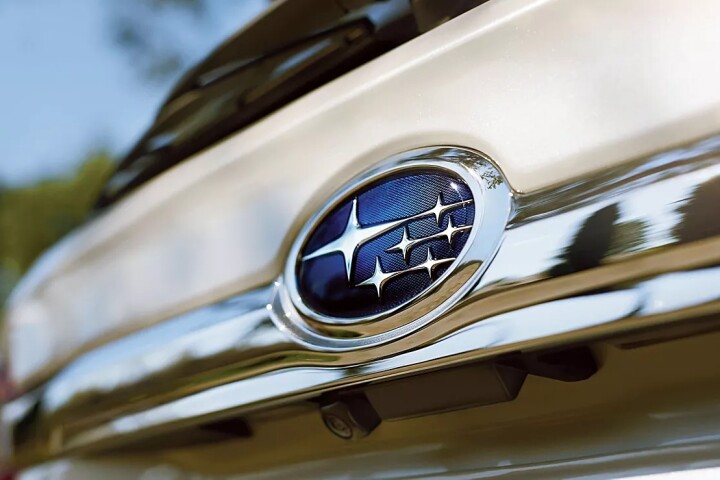When the space shuttle Atlantis touched down at 5:57 a.m. EDT this morning at NASA's Kennedy Space Center it marked the end of an era. Over 30 years, NASA's Space Shuttle program has overseen a total of 135 shuttle missions for the five-shuttle fleet, beginning with the April 12, 1981 launch of Columbia carrying two astronauts into space on an operational test flight. In their lifetimes, the world's first reusable spacecraft have been used to launch and repair satellites, carry out cutting-edge research and facilitate the construction of the largest manmade structure in space, the International Space Station (ISS). As the curtain comes down on the space shuttle era we take a look back at the craft that have defined space travel for a generation.
History
Although NASA began early studies of space shuttle designs even before the Apollo 11 moon landing in 1969, the shuttle program wasn't formally launched until January 5,1972, when President Nixon announced that NASA would proceed with the development of a reusable space shuttle system. The original goal of the Space Shuttle program, which is officially known as the Space Transportation System (STS), was to provide cheaper access to space than the disposable rockets previously used and to support the future space station.
Many potential shuttle designs were proposed, including a fully reusable design that would use a large winged manned booster to carry a smaller winged manned orbiter to a certain altitude and speed before separating and being piloted back to earth and landing horizontally, while the orbiter continued into low earth orbit.
Others argued that the construction of a space station would be better achieved by maintaining the Saturn V production line and using its large payload capacity to launch a space station in a few payloads rather than many smaller shuttle payloads. Shuttle supporters countered that given enough launches, a reusable system would have lower overall costs.
NASA eventually opted for a winged orbiter with three liquid fueled engines, a large expendable external tank which held liquid propellant for these engines, and two reusable solid rocket boosters. This design was less costly to build and less technically ambitious than earlier fully reusable designs. And although it may seem dated to a generation that has grown up on science fiction movies and TV shows, and compromises were made in order to satisfy both NASA and the Department of Defense, the space shuttle design was revolutionary for its time.
Enterprise fails to boldly go
The first orbiter - which was originally to be named Constitution but was christened Enterprise after a write-in campaign from Star Trek fans - was rolled out on September 17, 1976. It provided the first real validation of the design in a series of successful glide-approach and landing tests, but was constructed without engines or a functional heat shield, so wasn't capable of spaceflight. The original plan was to retrofit Enterprise for orbital flight, but during the construction of Columbia, details of the final design changed and it was considered less expensive to build Challenger around a body frame constructed as a test article rather than dismantle Enterprise and have various parts altered at various subcontractors across the country.
So after a series of test flights Enterprise was stripped of certain components that were to be reused in other shuttles and entered retirement. Like many retirees, Enterprise went on an international tour visiting various countries and U.S. states before being delivered to the Smithsonian Institute on November 18, 1985.
NASA considered pulling Enterprise out of retirement after the Challenger disaster in 1986 but ended up using spares constructed at the same time as Discovery and Atlantis to build Endeavour.
After being restored, Enterprise was moved to Smithsonian's National Air and Space Museum's Steven F. Udvar-Hazy Center at Dulles International Airport, where it has been the centerpiece of the space collection. It is set to be replaced by Discovery and will be moved to a newly constructed hangar adjacent to the Intrepid Sea-Air-Space Museum in New York City.
First flight
On April 12, 1981 - 20 years to the day after Yuri Gagarin made the first human spaceflight - Columbia launched from Kennedy Space Center (KSC) on the STS-1 mission. It orbited the Earth 36 times before landing on the dry lakebed runway at Edwards Air Force Base in California. All shuttle launches have taken place at KSC with landings occurring at either KSC or Edwards Air Force Base (EAFB) in California with the lone exception of a landing at the backup landing site on Northrup Strip at White Sands Space Harbor in Las Cruces, New Mexico.
Columbia flew another three test flights and the first operational flight before Challenger became the second shuttle to go into orbit on April 4, 1983. Discovery followed with its first mission on August 30, 1984, followed by Atlantis on November 26, 1985 and finally Endeavour on May 7, 1992.
Not including the final mission, the five shuttles traveled a combined total of 537,114,016 miles (864,401,219 km), orbited the Earth 20,952 times and spent a total of 1,320 days, 1 hour, 32 minutes and 44 seconds in space. The various shuttle docked with Mir a total of nine times and with the ISS a total of 37 times, including the final mission.
Program benefits and spinoffs
Many people because mistakenly believe Tang, Teflon and Velcro to be spinoffs of the space program. MRI technology, cordless power tools, barcodes, smoke detectors and quartz clocks are other technologies often mistakenly attributed to the space program, but NASA isn't responsible for any of them. The list of space program spinoffs is, however, lengthy and widely varied. The shuttle program, which ran for three times as long as Apollo's one decade, spawned roughly 120 commercialized spinoffs compared to Apollo's roughly 80. Here's a list of a select few:
- Artificial heart: which used miniaturized ventricular assist pumps developed from shuttle fuel pump technology.
- Biodegradable lubricants: developed for the enormous crawlers that ferry the shuttles to and from their launch pads.
- Rescue tool: a more lightweight "Jaws of Life" device that frees accident victims from wrecked vehicles using a miniature version of the explosive charges used to separate the shuttle from the solid rocket boosters.
- Firefighting infrared cameras: technology first used by NASA to observe the blazing plumes from the shuttle is now used by firefighters to locate hotspots.
- Home insulation: the same lightweight, flexible aerogel used to insulate cryogenics on space shuttles is thinner and more effective than standard fiberglass insulation.
Automotive insulation: the same thermal protection system used to safeguard shuttle astronauts is used to shield NASCAR racers from extreme engine heat.
- Prosthesis material: the light, virtually indestructible foam insulation used to protect the shuttle's external tank is used in place of heavy, fragile plaster to produce molds for prosthetics.
- Video stabilization software: image processing technology used to analyze space shuttle launch video has been used by law enforcement officials to clean up crime-scene video.
With the space shuttle costing $196 billion over 40 years, many people try and quantify the return on investment. But so many of the benefits of the shuttle program and space exploration in general are indirect and less tangible than commercial products.
The Hubble Space Telescope, which shuttle astronauts not only launched, but repaired and upgraded numerous times, not only provided spectacular images of our universe, but helped refine estimates of its age - as well as cast doubt upon its future and led to the theory of dark energy. There are also numerous scientific advances made thanks to the hundreds of experiments carried by those aboard the shuttle and those it has carried to the ISS.
The space shuttle also helped usher in a new age of international collaboration in space with the U.S.'s former Cold War enemy and Space Race combatants Russia with the Shuttle-Mir program. Further diplomatic benefits also result from the representatives from 16 other countries that have been carried on space shuttle.
Beginning of the end
Of course it wasn't all smooth sailing with the Challenger disaster on January 28, 1986 and the Columbia disaster on February 1, 2003, resulting in the deaths of the seven-member crews of both shuttles. Challenger broke apart 73 seconds after launch due to an O-ring failure, while Columbia disintegrated on re-entry as a result of damage to the leading edge of the left wing sustained during launch.
Both disasters led to the suspension of the space shuttle program and criticism of the attitude of NASA management towards safety issues. And although the program resumed after a hiatus, the Columbia disaster signaled the beginning of the end for the space shuttle fleet with President George W. Bush announcing the Vision for Space Exploration policy less than a year after the incident, which called for the completion of the ISS by 2010 and the retirement of the Space Shuttle fleet by 2010 in favor of developing a new spacecraft.
Where to from here?
So in the mid-2000s NASA began developing a new spacecraft not only to ferry passengers and cargo to the ISS but also to travel beyond Earth orbit to the Moon and Mars. Originally called the Crew Exploration Vehicle it later became known as Orion and was developed under the name Project Constellation. However, in early 2010 the Obama administration asked Congress to instead endorse a scaled-back plan with heavy reliance on the private sector and Project Constellation was canceled in October that year. With no replacement spacecraft ready to fill the void left by the retirement of the shuttle fleet, extending the space shuttle program for an additional five years was considered by the U.S. government until a replacement could be developed. However this was rejected leaving NASA to rely on hitching a ride to the ISS on Russian Soyuz rockets. Under an existing contract NASA will pay the Russian Federal Space Agency US$56 million per seat until 2014, after which the price will rise to $63 million per seat before a commercial launcher and capsule built by a private corporation in partnership with NASA is ready to fly sometime around 2015.
The possible replacements for the shuttle have been reduced to four proposals that have been awarded a total of nearly $270 million as part of the second set of the Commercial Crew Development (CCDev) program. These are Blue Origin's biconic capsule that would be launched atop an Atlas V 402, Sierra Nevada Corporation's Dream Chaser spaceplane, SpaceX's Dragon spacecraft and Boeing's CST-100 spacecraft. The third round of CCDev is planned for the end of 2011, with NASA to award grants in 2012.
End of an era
During the final mission (STS-135), Atlantis flew 200 orbits around Earth and traveled 5,284,862 miles, delivering more than 9,400 pounds of supplies to the International Space Station.While the touchdown of Atlantis this morning will no doubt be met with a mixture of pride and sadness by those involved, the space shuttle fleet was past its use-by date, its life having already been extended. So as the space shuttle era is brought to a close, it also marks the beginning of a new and likely even more exciting era where commercial space tourism promises to bring space travel within the reach of more and more people - a dream that the space shuttle has fostered in so many who have grown up watching it.




















